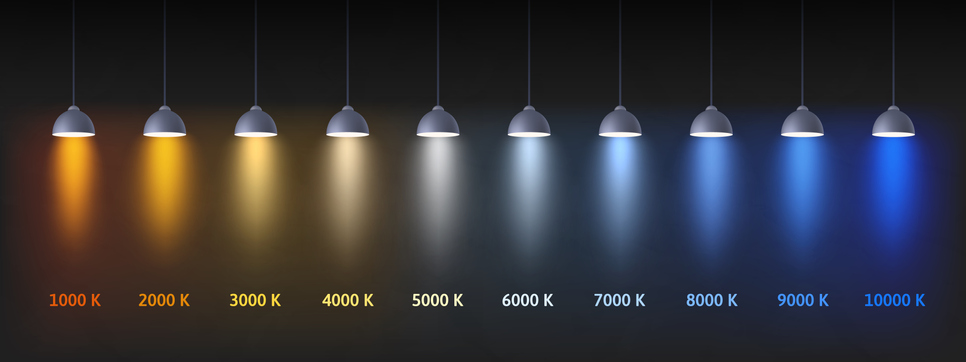Lumens, Candles, and Kelvins – Oh My
When it comes to lighting, it’s easy to get caught up in aesthetics. Let’s face it; that’s the fun part! Thankfully, lighting options have gone from standard to astounding in every color, shape, and size. We have glowing sculptural statements, layered and backlit alternatives that create a dramatic effect, pendants for every style, and chandeliers that are both sustainable and equipped with smart features.
But, no matter how gorgeous that glam glass chandelier is, you can be left in the shadows if it doesn’t shine enough light for your space. This is where form and function converge with the help of some crafty calculation. Let’s take a look!
Lumens
Lumens measure how much light the source generates; the higher the lumen, the brighter the light. Both traditional lights and LEDs use lumens to determine how much light they produce.
Wattage
Wattage is the scale of how much energy or electricity a bulb requires to achieve its lumen output. Each type of bulb has a different lumen-to-watt ratio. It’s essential to pay attention to the lumens rather than the watts, as a 10W LED bulb produces 700+ lumens, whereas a standard bulb requires 60W of energy to create the same lumens.

Foot Candle
A foot-candle measures the light intensity from a constant light source on a one-square-foot surface. First, you’ll determine the room size by square footage to calculate your needs. A 10 x 10 room = 100 square feet. Next, you’ll establish the type of room or application. Then, you multiply the square footage by the foot-candle requirement. Different rooms have different needs. Generally, a living room needs 10-20, a dining room or kitchen 30-40, and a bathroom 70-80. So a 100 square foot dining room would need 4,000 lumens, and that same size bathroom 8,000, while a 10 x 15 kitchen at 150 square feet requires 6,000.
Kelvins
Kelvins are a measure of the temperature of the light, which determines the color the bulb will produce. As you can see, different Kelvin temperatures can create atmospheres spanning from warm and inviting to a cool white to crisp, bright daylight. The most common temperature is 2,700 for a warmer look and 3,000 for a more brilliant output.

When you need remodeling services in the St. Louis area, let Callier & Thompson be your go-to source regardless of scope or size. Having been awarded the BBB Torch Award for our commitment to exceptional standards and high ethics in our treatment of customers, employees, and suppliers, you can have confidence that you’re choosing the best. Contact us for a consultation today!

